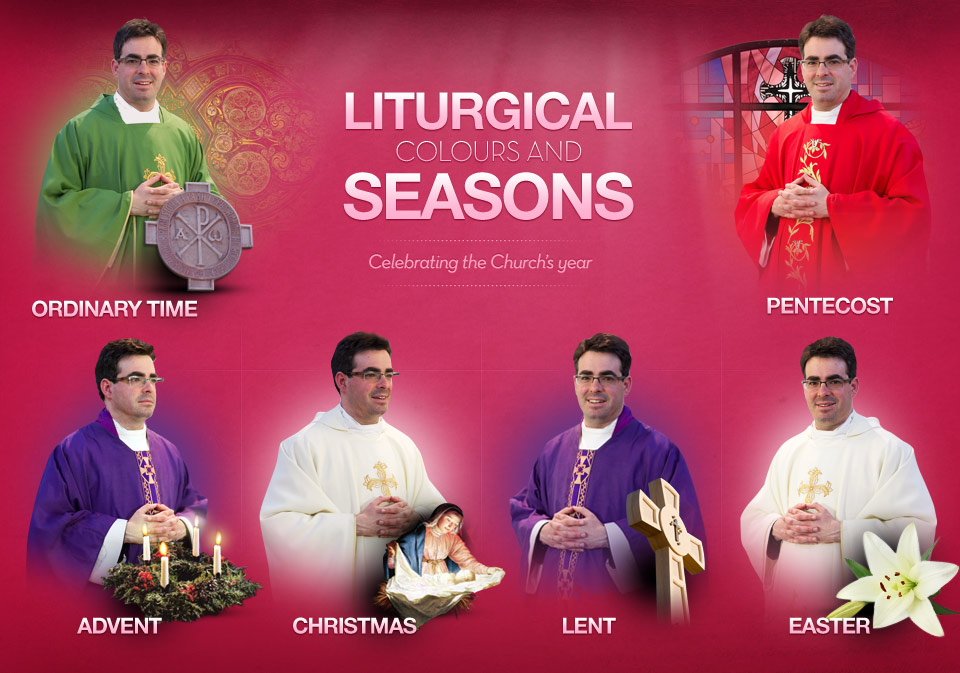LITURGICAL COLOURS AND SEASONS
The colour of the liturgical vestments changes from time to time. This is because the Church uses different colours to indicate the season or feast that is being celebrated.
The different colours are drawn from creation to remind those participating in a liturgy of the different blessings of God.
The colours used are white (or gold), purple (or violet), green, red and rose pink.
White
White (or gold), since it is a festive, joyful colour, is used during the Christmas and Easter seasons, and on major feast days, such as, on the celebrations of the Lord other than of his Passion, of the Blessed Virgin Mary, of the Holy Angels, and of Saints who were not martyrs, and on the Solemnities of All Saints. Because white symbolises the Resurrection, it is also the colour often used for funerals.
Purple
Purple (or violet) symbolises repentance and penance. Vestments of purple or violet are used during the seasons of Advent and Lent.
The colour reminds us of the violet flower that bows its head and is a symbol of humility. Lent is the season of prayer, fasting and almsgiving. It is a quiet season of reflection. The colour of Advent is more of a rose-purple, like the sky just before sunrise. This is the time of year when the Church waits in joyful hope to celebrate the birth of Jesus Christ, the light of the world.
Purple or violet dye was very expensive. An early Christian, Lydia from Thyatira, made her living from the purple dye trade and was able to support St Paul in his missionary work (Acts 16: 14-15).
GREEN
Green is a sign of life in nature and as such it represents growth, life and hope. Green is the colour worn most often during liturgies in Ordinary Time. It symbolises the graces that draw people into the life of God. Most of the Church's year is Ordinary Time.
Red
Red symbolises both blood and fire. It is the colour that is used on Passion (Palm) Sunday, Pentecost Sunday, and for celebrations of the Sacrament of Confirmation. It is also the colour that has traditionally been associated with martyrs – those who have shed their blood for their faith – and so it is worn on the feast days of martyrs.
Rose Pink
Rose pink is an optional colour that may be used on the Third Sunday of Advent and the Fourth Sunday of Lent. On both of these days, the Entrance Antiphon calls us to rejoice, so the pink vestments mark a softening of the penitential tone of the season.
For Reflection and Discussion
1
Choose a few dates throughout the year at random. What liturgical season does each date belong to? See if one or some of those dates is a saint's feast day. If you have more than one saint for that day, select the saint you are most interested in. Write an account of their lives, why they were canonised, why they interest you, and how you are inspired by them.
2
Research and write about one of the liturgical seasons; include information on its symbols, colour, celebrations and ceremonies, significant events etc.
3
Read and reflect on what Pope Benedict XVI said about the Easter Triduum.
4
Make an Advent wreath and research the history and meaning of the Advent wreath.

